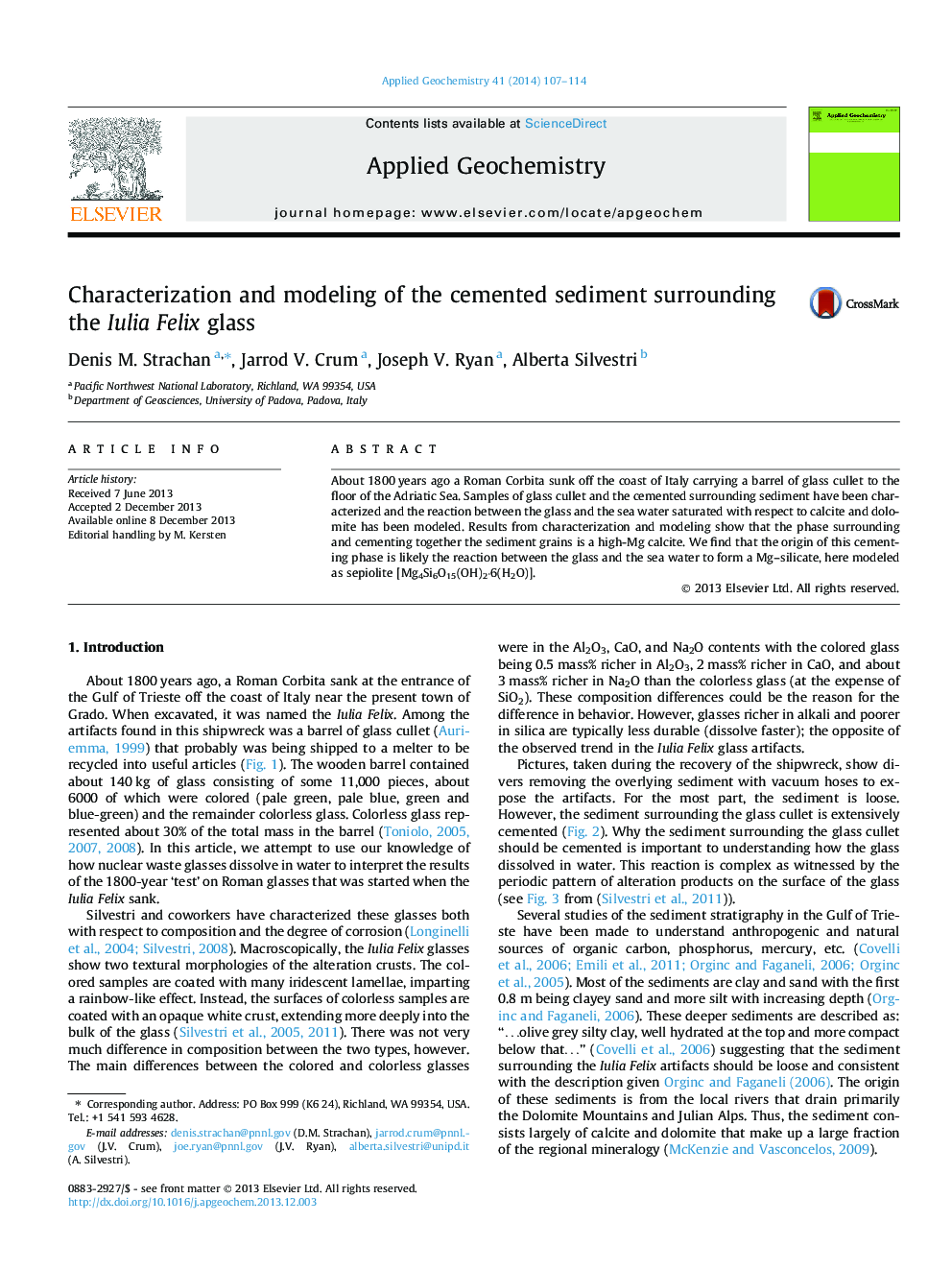| Article ID | Journal | Published Year | Pages | File Type |
|---|---|---|---|---|
| 4435869 | Applied Geochemistry | 2014 | 8 Pages |
•Iulia Felix – An independent corrosion experiment unwillingly started ∼1800 years ago.•The sediments around samples of glass cullet have been cemented together.•After characterizing the sediment/glass reaction, we geochemically modeled the system.•We find the cementing phase arises from a glass-seawater reaction that forms a Mg–silicate.•The results of this experiment offer insight into nuclear waste corrosion.
About 1800 years ago a Roman Corbita sunk off the coast of Italy carrying a barrel of glass cullet to the floor of the Adriatic Sea. Samples of glass cullet and the cemented surrounding sediment have been characterized and the reaction between the glass and the sea water saturated with respect to calcite and dolomite has been modeled. Results from characterization and modeling show that the phase surrounding and cementing together the sediment grains is a high-Mg calcite. We find that the origin of this cementing phase is likely the reaction between the glass and the sea water to form a Mg–silicate, here modeled as sepiolite [Mg4Si6O15(OH)2⋅6(H2O)].
